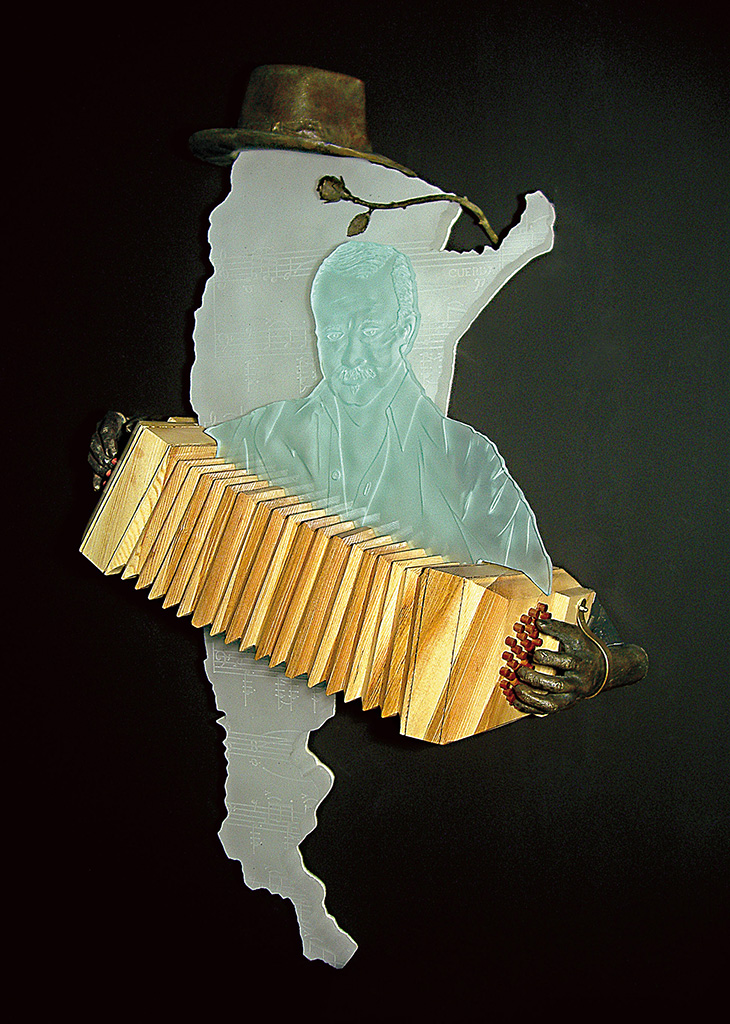Nuevo Tango (Astor Piazzolla)
Materials Sandblasted carved glass, cast glass, bronze, wood
Astor Piazzolla was born in Argentina to Italian parents who had immigrated in the last years of the 19th century. He spent most of his youth in New York City where he acquired fluidity in four languages: Spanish, English, Italian, and French. There, from the age of three until he reached sixteen his musical education was focused on jazz and classical music. His father in a moment of nostalgic longing for his birthplace bought Astor a bandoneon in a pawn shop. He soon became a master of this small accordion like instrument and when he returned to Argentina in 1937, he was quickly integrated into the best of the tango orchestras. His early influences pushed him to continue to expand his horizons and he began to study with Argentina’s most famous classical composer Alberto Ginestera.
In 1953, he entered a symphonic composition in an international contest and won a grant to study with the legendary Nadia Boulanger in Paris. As Piazzola said, “she turned my life around in a day.” After looking at sheaves of his classical scores she determined that she could not find his soul in any of them. Very probing in her questions, she asked about his background, his family, and what instrument he was most proficient on. Embarrassed, he finally admitted being a bandoneon player in nightclubs. That, she said is the real Piazzolla.
When he returned to Argentina, he formed a tango orchestra and pushed tradition to the side violating the sacred boundaries of this national cultural heritage by incorporating his classical and jazz influences. Now, he said, “I have created a tango not for singing or dancing but a tango for thinking.” Not surprisingly, he found resistance to his music from the tradition- bound Argentines but received wide acclaim in the International music scene. Eventually he became enormously respected in his own country and now almost twenty years after his death continues to have a structural and intellectual influence on performers and composers in a vast range of musical styles.
I first heard a recording of his composition “Libertango” performed by a group headed by the classical cellist Yo Yo Ma and was moved by what I heard to be the subtle influences of Bartok and Bebop. What an exotic combination played into a tango. In Piazzola, I found (in a completely different art form) a kindred spirit who borrowed from the unconventional areas of his chosen voice to create that which was uniquely his own.
